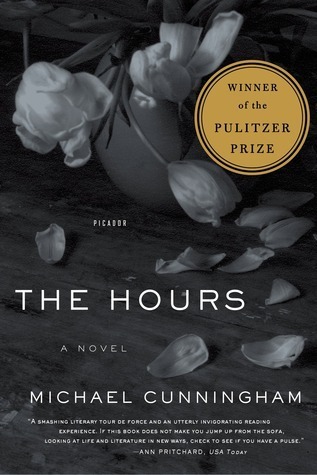Title: The Hours
Rating: 5 Stars
The title of this blog is also what I wrote as my Goodreads review. Somehow the title feels right even though I’m not sure what it means. As I write this, I’ll try to see if I can actually figure that out.
This book is inspired by Virginia Woolf’s novel Mrs Dalloway. A couple of years ago, I read Mrs Dalloway and wrote about it here (with a similarly possibly profound / possibly nonsensical title of Don’t Cross The Streams Of Consciousness). A very simple description of the novel is that it is a day in the life of Mrs Dalloway as she plans a party. Along the way, ideas of death, suicide, mortality, aging, love, love lost, and forbidden love all bubble up in a then innovative stream of consciousness.
If you’ve read that post, you’ll know that I wasn’t exactly blown away by Woolf’s novel. It was interesting and challenging but I didn’t find it particularly engaging.
Given my somewhat lukewarm enthusiasm for Woolf’s novel, I wasn’t exactly thrilled to read The Hours. However, I am kind of a list obsessed kind of guy and The Hours did win the Pulitzer Prize for Fiction. By now, I’ve read newly every prize winner since 1970. The only ones that I had left were The Hours and The Goldfinch, so I kind of felt obligated to read The Hours (and I’ve got my eyes on you too now Donna Tartt!).
The Hours tells three different stories that share the common thread of being related to the novel Mrs Dalloway. First of all, set in the 1920s, there’s Virginia Woolf herself trying to figure out her new novel (the yet unwritten Mrs Dalloway). Set in the 1940s, Laura Brown, a young housewife pregnant with her second child and feeling stifled by domestic life, is trying to find time in her day to read the novel Mrs Dalloway. Finally, set in the 1990s, there’s Clarissa Vaughn, a sophisticated New Yorker planning a party for Richard, an award winning poet and Clarissa’s lifelong friend and once lover that is now dying of AIDS. Long ago, Richard has taken to calling her Mrs Dalloway.
In all three stories, Cunningham stays true to the basic literary framework of Woolf’s Mrs Dalloway. In each, the events take place over one day. In each, the story is told in a stream of consciousness form from multiple viewpoints. Even though the story is told over one day, the stream of consciousness allows for periodic Proustian reveries of memory as a character encounters a scent, a person, or any other trigger.
The same themes that, due to the time in which was written, were subtly implied in Woolf’s novel become much more explicit in this one. In the Woolf novel, Mrs Dalloway obliquely refers to an aborted youthful love affair with a young woman named Sally. Here, Clarissa Vaughn (by the way, Clarissa was Mrs Dalloway’s name in Woolf’s novel) is in a long term lesbian relationship with a woman named Sally. Several characters in that thread are openly gay (and being the 1990s, affected in various ways by the AIDS epidemic). Laura Brown shares a unexpected but pleasurable kiss with one of her neighbors.
Death, mortality, and suicide figure predominately in all three stories. In fact, the novel’s prologue starts with a description of Virginia Woolf’s actual suicide. The character Virginia Woolf is planning on having her character Mrs Dalloway commit suicide but eventually changes this focus to another character. Clarissa is coming to grips with the fact that she is a middle aged woman. The dying poet that Clarissa Vaughn is planning a party for commits suicide. Laura Brown, desperate to leave her trapped domestic life, contemplates suicide.
The three different plots ultimately do come together in an unexpected way. Even though it is a twenty-five year old novel and a film was made of it, I won’t ruin it here. Suffice to say that I found it extremely well done.
Reading this was odd to me because, as I’ve mentioned, the stream of conscious nature of the novel Mrs Galloway actually left me feeling somewhat disengaged. Although it’s a fairly slim novel, I found myself struggling to finish it.
This was not the case with The Hours. I’m not exactly how or why, but Cunningham’s approach pulled me in. I was engaged with the three main characters. I cared about them and what was going to happen to them. Not only that, but as I read, the memories that the characters surfaced triggered my own personal memories. In so doing, I found myself relating closely with all three women.
I think that’s what I mean when I say that there’s a Mrs Dalloway in all of us. Reading this book and the themes that it discussed triggered my own personal thoughts on the sensitive subjects raised by the novel.
